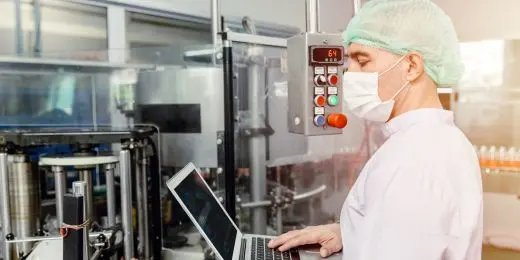What are HACCP Monitoring Procedures?
The Hazard Analysis Critical Control Point (HACCP) monitoring procedures include a set of practices used to identify, analyze, and control potential hazards that may arise in the food production process. Since numerous inherent risks in food production can put worker and consumer safety at risk, it’s paramount that organizations establish monitoring procedures to reduce risk and apply necessary corrections whenever there’s an issue.
HACCP’s entire philosophy revolves around putting most of the attention on the critical control points. These are areas in the production process where risks can be identified, evaluated, and corrected. That way, organizations may apply necessary corrections before the problems grow and affect more people.
HACCP’s entire philosophy revolves around putting most of the attention on the critical control points. These are areas in the production process where risks can be identified, evaluated, and corrected. That way, organizations may apply necessary corrections before the problems grow and affect more people.
Importance
The most important reason for establishing and following HACCP monitoring procedures is to protect workers and consumers. Small risks in the food production process, if left untreated, may grow into large problems that put consumer and worker health and safety at risk. The entire goal of HACCP monitoring procedures is to continuously assess CCPs and ensure that they remain within predetermined limits. That way, companies have an early warning system that allows them to hop on food hygiene and safety problems and find solutions instantly.
Safety should be a top priority in the food manufacturing industry. Aside from protecting consumers, it’s crucial to have monitoring procedures to maintain the quality of your products. That way, you build a good reputation for your product and company. It will definitely take work to establish HACCP monitoring procedures in your organization, but rest assured that it’s definitely worth all the protections you receive as a result.
How to Establish HACCP Monitoring Procedures
Establishing HACCP monitoring procedures isn’t a standard process. While this methodology makes it simpler to set up a monitoring system, organizations must tweak the procedures to their specific needs and preferences. So, don’t be afraid to make adjustments as you go, especially when setting up these monitoring procedures for the first time.
That said, there are some basic steps in the HACCP monitoring process that are best to follow, regardless of the organization’s needs. These steps include:
Determine the Critical Limits
The first step in setting up your monitoring procedure is setting your critical limits for your control points. Again, the control points are areas in the production process where you can spot, analyze, and correct issues right away. The critical limits are the boundaries that must not be exceeded to prevent or eliminate hazards. This could be the internal temperature for cooking food and eliminating bacteria, storage conditions, and more.
Choose the Right Monitoring Methods
The right monitoring methods for your organization largely depend on the products you’re producing and the way you manufacture them. Some organizations require temperature and humidity monitoring, some require pH level monitoring, while others must monitor very specific parameters that are unique to their industry.
Either way, it’s critical to keep track of all the parameters relevant to the safety and quality of your products.
Explore SafetyCulture Monitoring Solution
Utilize advanced sensor technology to monitor assets, automate vital alerts, implement actions, and report urgent issues.
Talk to an expertSet the Monitoring Frequency
The next step is establishing how frequently the CCPs in your workflow are monitored. To determine this, you need to consider the stability of the process, the likelihood of risks, and the regulatory requirements you must follow. From there, it will be much easier to establish the monitoring frequency of your HACCP procedures.
Document the Processes
Like every process, HACCP monitoring requires documentation. It’s critical for modern organizations to remain transparent. That way, it’s easier to share information and find potential causes of problems.
So, when monitoring facilities and processes using HACCP, make sure that the team documents everything they do so that the team can revisit the data whenever necessary.
Regularly Review and Update the Procedures
After running the HACCP monitoring methods, the next step is reviewing the process. Like any process, HACCP monitoring requires continuous improvement and adjustment. That’s why you must review how well the monitoring procedures worked and whether they were able to prevent or minimize risks.
From there, it will be easy to determine whether or not you need to apply corrective actions or adjust your monitoring procedures.




